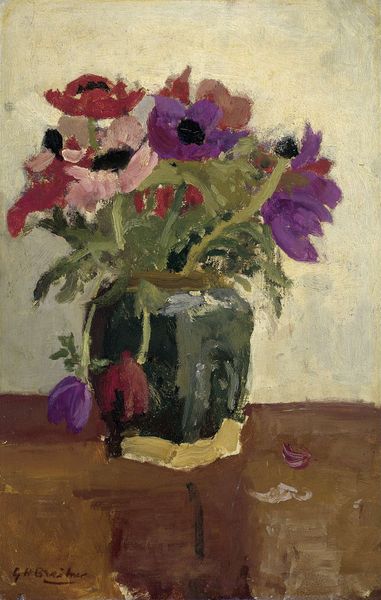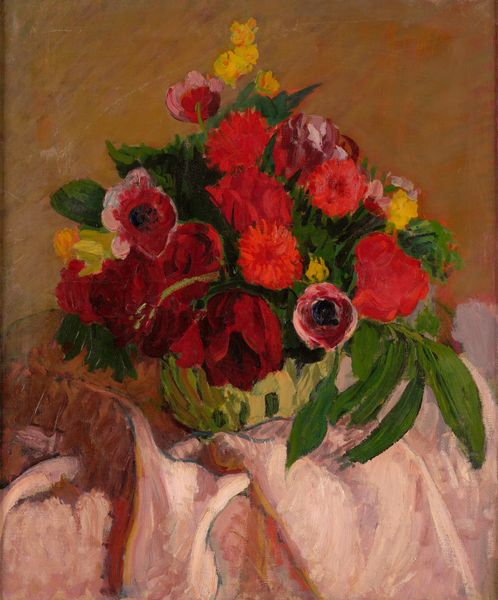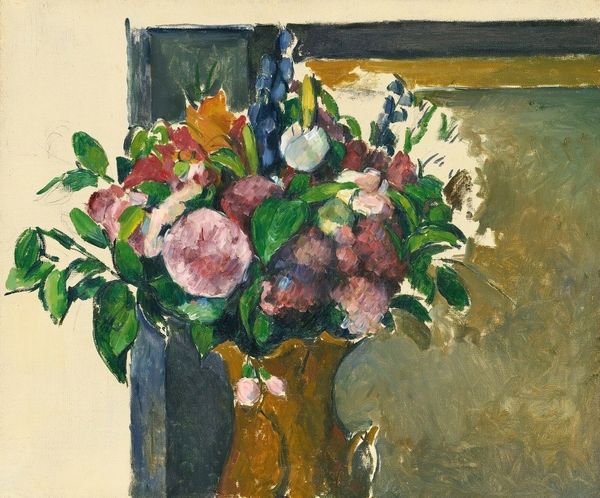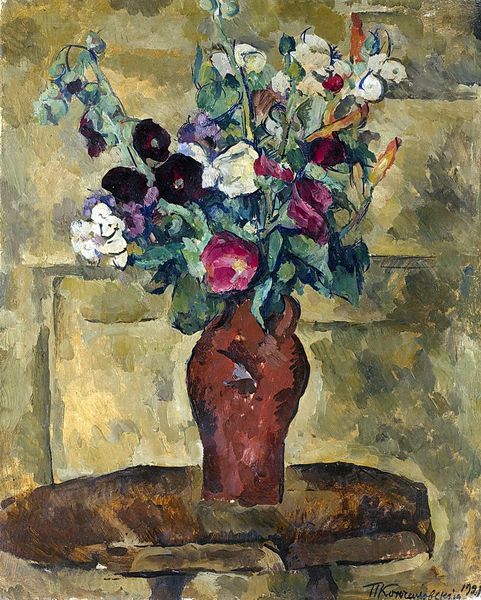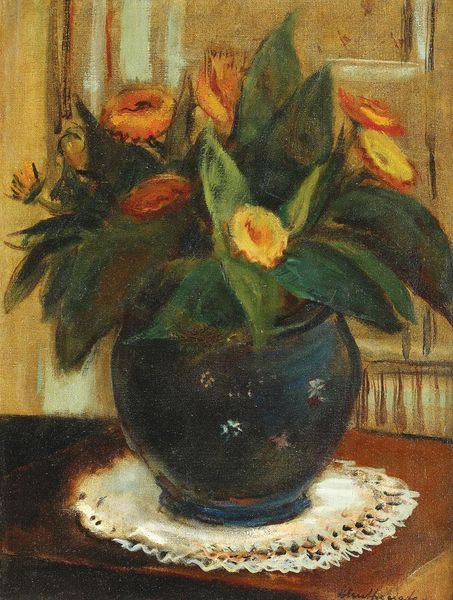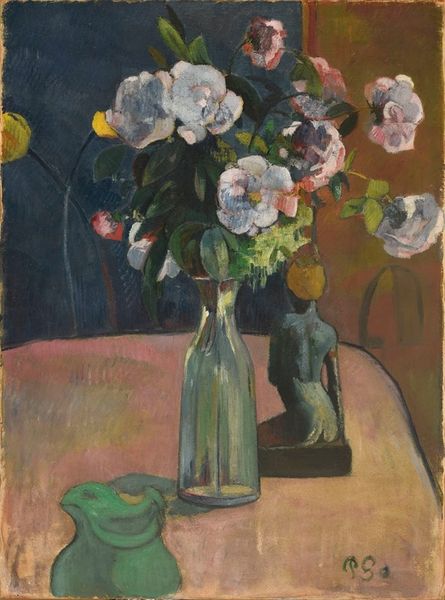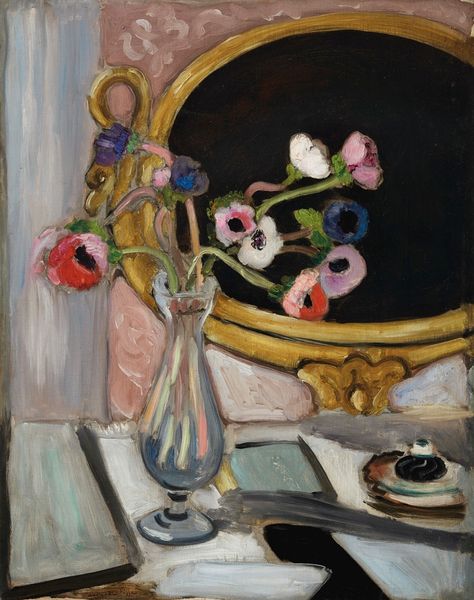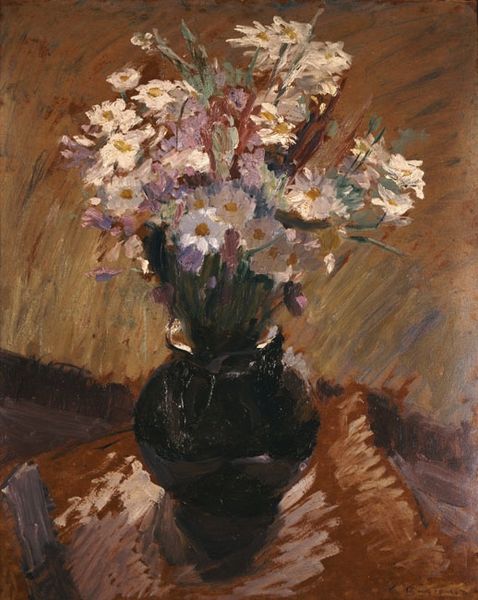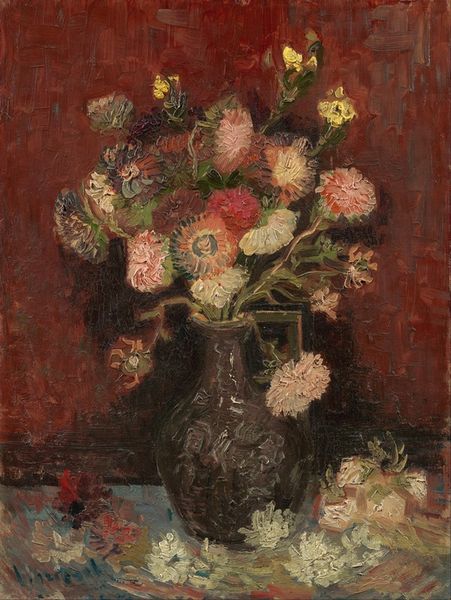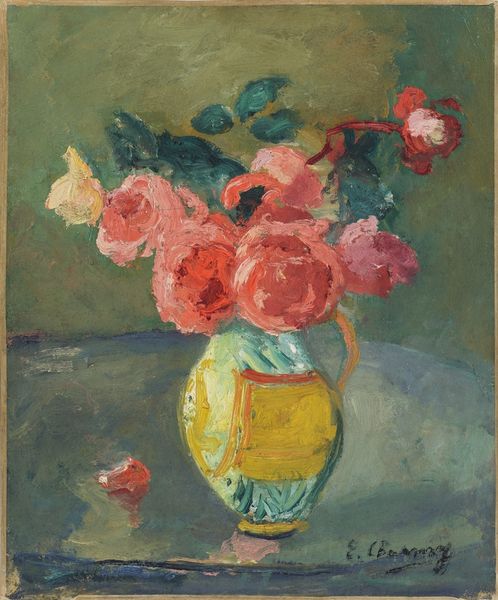
oil-paint
#
portrait
#
oil-paint
#
oil painting
#
expressionism
Copyright: Constant Permeke,Fair Use
Editor: Here we have Constant Permeke's 1926 oil painting, "Fleurs: a still life with flowers". There's something about the muted color palette that gives the bouquet a feeling of solemnity, rather than vibrancy. How do you interpret this work? Curator: The solemnity you observe is a potent entry point. Consider the socio-political landscape of 1926. Permeke, as a Belgian Expressionist, lived through the trauma of World War I. How might that experience shape his representation of something traditionally associated with beauty and joy? The thick application of paint and darkened palette might speak to a world scarred by conflict, a subversion of traditional still life tropes. Editor: That's a perspective I hadn't considered. I was focused on the flowers themselves, their drooping quality, and how it contrasts with the more vibrant colors one might expect. Are you suggesting Permeke is making a statement about the disillusionment following the war? Curator: Precisely. The Expressionists frequently used intense colors and distorted forms to express emotional experiences. But Permeke's restrained palette hints at a different kind of emotional landscape. He’s not simply expressing the joy of nature, but also questioning what remains after great devastation. Consider, too, the potential symbolism of flowers representing fragility and mortality, echoing the immense loss of life. Editor: It's almost like the flowers are a memento mori. Thanks, that really changes how I see it. Curator: Engaging with the context of an artwork allows us to explore deeper layers of meaning, and consider it as part of larger conversation about shared human experience, collective identity and the societal norms we establish and deconstruct. Editor: I appreciate you providing me a way to consider the role of this artwork within its cultural moment.
Comments
No comments
Be the first to comment and join the conversation on the ultimate creative platform.
